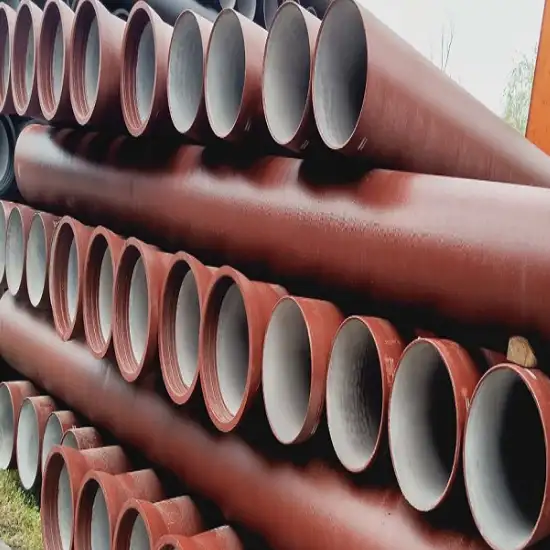The cost of 10-inch ductile iron pipe per linear foot varies based on several factors, including material class, joint type, coatings, and market conditions. As of recent data, prices range from approximately $32.01 to $63.12 per linear foot. Understanding these variables is crucial for accurate budgeting and efficient project planning in water and sewer infrastructure developments.

1. Factors Influencing the Cost of 10-Inch Ductile Iron Pipe
Several key factors affect the pricing of 10-inch ductile iron pipes:
-
Material Class: Higher classes (e.g., Class 54) have thicker walls, offering greater strength but at increased cost.
-
Joint Type: Tyton joints are common and cost-effective, while mechanical joints may incur higher expenses due to additional components.
-
Coatings: Protective coatings like zinc or epoxy enhance durability but add to the overall cost.
-
Market Conditions: Fluctuations in raw material prices and supply chain dynamics can influence pipe costs.
-
Quantity and Supplier: Bulk purchases may attract discounts, and prices can vary between suppliers.
2. Comparative Pricing Analysis
A comparison of recent pricing data illustrates the cost variations:
| Supplier/Source | Pipe Class | Joint Type | Coating | Price per Linear Foot |
|---|---|---|---|---|
| US Pipe | Class 54 | Tyton | None | $63.12 |
| A. Louis Supply | Class 52 | Tyton | None | $48.81 |
| Louisville Water Company | Not Specified | Not Specified | Not Specified | $40.98 – $44.93 |
| Fairfax Water | Class 52 | Not Specified | Zinc | $32.01 |
This table highlights how specifications and supplier choices impact pricing.
3. Installation Cost Considerations
Beyond material costs, installation expenses significantly contribute to the total project budget:
-
Labor: Skilled labor for excavation, pipe laying, and joint assembly is essential.
-
Equipment: Machinery for trenching and lifting pipes adds to costs.
-
Site Conditions: Challenging terrains or urban settings may require additional resources.
-
Permits and Compliance: Obtaining necessary permits and adhering to regulations can incur fees.
Installation costs can range from $8.40 to $24.00 per linear foot, depending on these factors.
4. Advantages of Ductile Iron Pipes
Despite higher upfront costs, ductile iron pipes offer long-term benefits:
-
Durability: High resistance to pressure and external loads.
-
Longevity: Service life often exceeds 50 years with proper maintenance.
-
Versatility: Suitable for various applications, including water and wastewater systems.
-
Recyclability: Environmentally friendly due to recyclable materials.
These advantages can lead to cost savings over the pipe’s lifespan.
5. Market Trends and Future Outlook
The ductile iron pipe market is influenced by infrastructure investments and environmental considerations:
-
Infrastructure Projects: Government initiatives can boost demand, affecting prices.
-
Material Innovations: Advancements in coatings and manufacturing may improve performance and cost-efficiency.
-
Sustainability: Emphasis on eco-friendly materials may increase the preference for ductile iron pipes.
Staying informed about these trends is vital for strategic planning.
6. Frequently Asked Questions (FAQs)
Q1: What is the typical cost range for 10-inch ductile iron pipes?
A1: The cost typically ranges from $32.01 to $63.12 per linear foot, depending on factors like material class, joint type, and coatings.
Q2: How does pipe class affect pricing?
A2: Higher classes, indicating thicker walls and greater strength, generally cost more due to increased material usage.
Q3: Are there additional costs beyond the pipe material?
A3: Yes, installation costs—including labor, equipment, and permits—can add $8.40 to $24.00 per linear foot to the total expense.
Q4: How do coatings influence the cost and performance?
A4: Protective coatings like zinc or epoxy enhance corrosion resistance, potentially extending the pipe’s lifespan, but they also increase the initial cost.
Q5: Can bulk purchasing reduce the cost per foot?
A5: Purchasing in larger quantities often leads to discounts, lowering the cost per linear foot. It’s advisable to consult suppliers for bulk pricing.
Q6: How does ductile iron compare to alternative materials in terms of cost and performance?
A6: While ductile iron pipes may have higher initial costs compared to materials like PVC, they offer superior strength, durability, and longevity, which can result in lower long-term maintenance and replacement costs.
References:
AWWA Standards for Ductile Iron Pipe and Fittings — American Water Works Association (AWWA)
Drinking Water Distribution Systems: Assessing and Reducing Risks — National Academies Press
Water Infrastructure and Research — U.S. Environmental Protection Agency (EPA)

